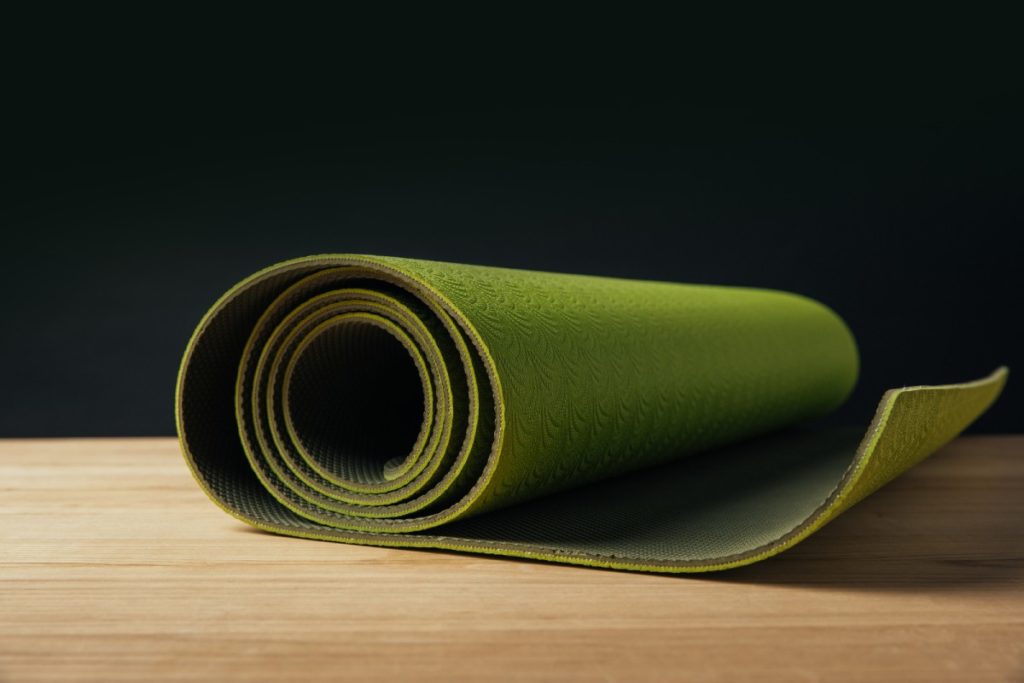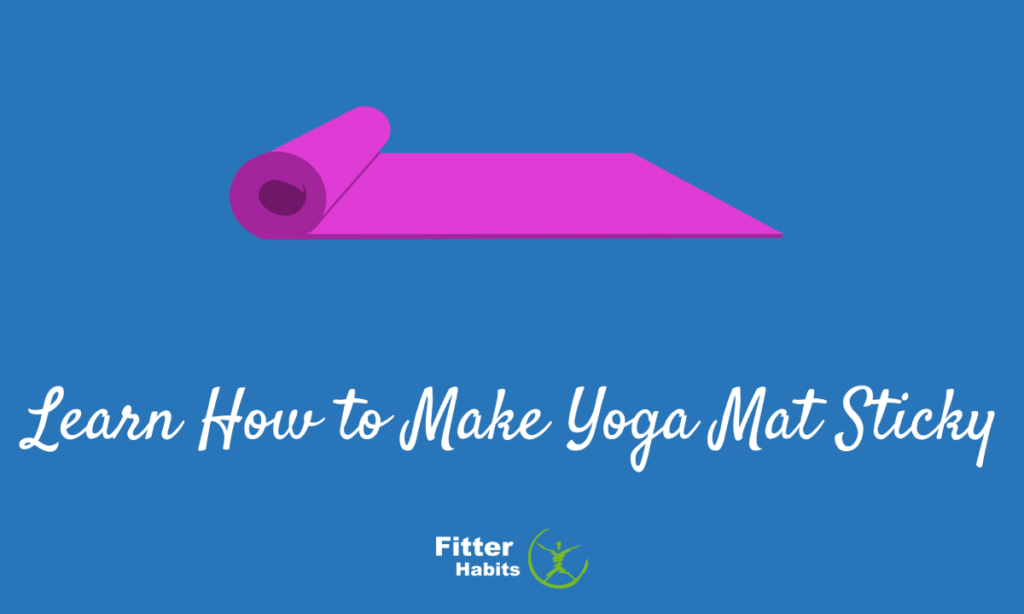If you’re worried about the mat moving on carpet or slipping on your wood or linoleum floor, here are ways to make yoga mat sticky for floors or carpeting.
When holding yoga poses for several seconds when changing from one yoga position to the next, a mat that won’t slip or slide on the floor is essential. Yoga poses should be graceful and balanced. Many people choose yoga specifically because it is a safe, low-impact exercise that can dramatically improve flexibility and increase muscle strength.
While this all very true, statistics show that yoga-related injuries had nearly doubled from 2001 to 2014. The accidents included injuries to the wrists, lower back, shoulder, elbow, knees, and neck. Slip and fall injuries can be more difficult because they are usually unexpected. You would need extremely fast reflexes to avoid injury when a yoga slips out from under your feet.
But, no need to worry! Here we describe several ways you make a yoga mat sticky for either floors or carpeting.
Contents
Why it’s important to use a sticky yoga mat
A sticky yoga mat is the best way to keep from sliding all over the place. It doesn’t matter if you practice yoga on a mat outdoors or inside, there are two options to increasing the floor grip of your yoga mat, either traction or friction. You’ll need friction to stabilize the mat when turning or making quick changes of direction. And, you’ll need traction at all times to offer you a stable and secure surface.
Traction is the grip between the mat and the floor surface. Just like a good pair of rubber-soled, work shoes, you get better traction and increased friction that will reduce the chance of slipping on dry, slick floors or wet surfaces.
If your yoga mat doesn’t already have a sticky surface or if you’re using a regular gym mat for yoga practice, there are ways to make a yoga mat stick better to hard floors or carpeting.
You might also find our yoga mat holder buying guide helpful.
How to Make Yoga Mat Sticky on Carpet

Expect a yoga mat that is not sticky on the bottom to either move or creep on carpeted floors. And, the longer the carpet pile (or the more plush), the greater chance you have of that yoga mat slipping right from under your feet. This happens because the carpet moves beneath you when you move on your mat.
Option 1. Use Floor Mat Tape
If you don’t have a carpet-appropriate yoga mat, you can make a yoga mat more sticky on carpet by using carpet tape or floor mat tape. Using this tape will secure your athletic mats and yoga mats better on any surface, including epoxy flooring, rubber, foam, carpet, wood, and even metal floors. Floor mat tape is double-sided adhesive tape.
It only takes minutes to remove the tape backing, adhere it to the bottom of your mat, then choose a place to locate your mat. This option is best when you leave your yoga mat in one location.
Option 2. Portable Floor Board
Mats move and creep on carpets due to the carpet pile beneath them – they will naturally move in the direction that the carpet pile is moving below. As the weight of someone walking on the matting transfers through the mat and to the carpet underneath, the carpet pile will move and therefore the matting will naturally move with it. This means, the longer and plusher the carpet pile, the more liable a mat is to creep, as the carpet pile beneath the mat also moves.
If you expect to use your yoga mat on both hard and carpeted floors, another option is to use a portable floor board with measurements close to your yoga mat size.. The board supplies a non-slippery, rigid platform to support yoga mats on soft surfaces like carpeting in the home, or outdoors on grass. The tabbed panels quickly snap together for an instant hard surface.
Portable floor boards are also used to prevent marking wood floors while practice tap dance and Irish step dance moves.
Option 3. Consider a Non-Skid Mat
If you practice yoga on hard flooring, invest in a non-skid underlay, similar to those used to keep area rugs from slipping. These products will work well for both carpeted and hard flooring. Check the product description to make sure it is a non-slip and non-skid underlay.
You may have to cut the material to size, so it can fit neatly under your yoga mat. Leave the underlay 2 inches shorter at each end to prevent the product and your yoga mat from rolling up.
Option 4. Buy a Non-slip Yoga Mat
Consider buying a new yoga mat, select a mat with a non-slip rubber backing or a mat with a gripper or claw type backing. Also, consider the mat material. Most yoga mats will be a little slippery when brand new, especially mats made of PVC material.
The best mats that tend to be non-slip right out of the box are those made of rubber, polyurethane, or TPE (a synthetic rubber that is earth-friendly and recyclable). Yoga mats made of these materials have a great initial and long-term grip
A good quality non-skid yoga mat will also provide greater cushioning which can help reduce the risk of injury when trying harder poses. The best yoga practice is done when you have confidence in striking all your poses without the mat slipping. This makes the investment in a yoga mat manufactured with advanced materials worth the investment.
The Final Word on How to Make Yoga Mat Sticky
If you find your mat still moving, consider one of the options discussed above:
- Use carpet and rug tape to secure a yoga mat to one location on a hard floor
- Invest in a portable floor board that is easy to assemble and features a non-skid surface
- Invest in a non-skid underlay that holds floor mats and yoga mats in place with friction and traction
When you take the time to make sure your yoga mat sticks to the floor surface, not only will you have a more enjoyable yoga session, but a more safe one also. Nothing distracts more when you’re trying to be graceful and elegant in your yoga poses than the worry that your yoga mat may slip from beneath you or shift a bit.
In the meantime, if you have a shiny new yoga mat that you would like to make less slippery, try washing the mat in a bathtub of warm water and a small amount of mild detergent. Next, try scuffing one side a bit. A worn-down yoga mat slips less.
You can accelerate the aging process by using a clean and slightly abrasive scrubber used for washing pots and pans. It only takes a little amount of scuffing to increase both friction and traction of your yoga mat.



